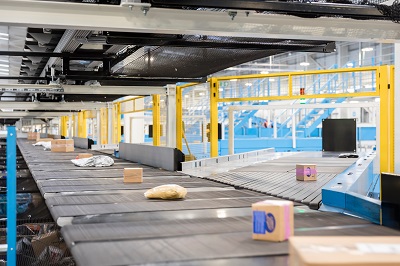Other Voices: Reverse logistics no longer a supply chain afterthought
A proactive approach to reverse logistics can prevent labor costs from skyrocketing, while also improving customer service.
Editor’s Note: The following column by Brad Radcliffe, vice president of sales, sortation and distribution, Beumer Corporation, is part of Modern’s Other Voices column. The series features ideas, opinions and insights from end-users, analysts, systems integrators and OEMs. Click here to learn about submitting a column for consideration.
———
Once a supply chain afterthought, reverse logistics has become a leading topic as e-retailers and direct-to-consumer manufacturers search for ways to tackle the high rate of customer returns.
The National Retail Federation predicts that online sales will fall between $427 billion and $443 billion by the end of 2017, growing at a rate that is up to three times higher than that of the wider industry. But the problem for online sellers is that about one-third of Internet purchases are returned, compared with brick-and-mortar returns of about 9%.
In an effort to keep pace with the top Internet retailers, almost 50% of online stores now offer free shipping on returns. Gone are the days of the 20% to 25% restocking fee as Amazon and other dominant online retailers have driven customer expectations toward free or discounted shipping, purchases that arrive within a day or two, and free or very discounted shipping on returns.
With the volume of returned merchandise up 50% to 80%, companies are struggling with how to process returns in a timely manner either to their own factory stores or to the wholesale liquidator market. The increase in returns has stimulated the growth of off-season, off-brand retailers which now have more and better product to sell. In some cases, merchandise is being sold by the truckloads, sometimes without off-price retailers being able to verify the contents. But how long is this sustainable?
E-commerce supply chains have been designed to push new products out the door, not to take products back in, process them and return them to a sales floor. While the high rate of returns is causing headaches for Internet sellers, it is creating new opportunities for companies that design and manufacture sortation and distribution systems.
The real challenge is that reverse logistics is extremely labor intensive. Returned merchandise may or may not be in its original packaging, and tags may or may not be included. Every returned package must be manually opened, manually inspected, manually sorted, repackaged and relabeled for resale.
Until now, sortation and distribution systems were never considered a viable option for reverse logistics because volumes weren’t there. But automation for managing returns in a warehouse has an ROI now. The same technology that for decades has allowed companies to reduce labor costs and increase efficiencies and throughput on the front end can be used to achieve the same reduction in manpower and efficiencies in repacking to increase turn times.
Since approximately 80% of labor is in the transporting of items within the distribution center, the ROI on a high-speed sortation system can quickly be realized for a company processing more than 10,000 to 15,000 items per hour. One off-price wholesaler we’ve talked with is processing 100,000 items per hour. That translates into a need for 600 to 700 full-time workers. Labor costs aside, the low unemployment rate in many parts of the country means that there simply may not be labor available. Sortation systems like cross-belt and loop sorters can reduce manpower by 30% to 40%. Once returns are manually broken down into a color-style-size SKU, automation can take over to transport items to a final sort into a master pack order.
The National Retail Federation predicts that online sales will continue to increase significantly, reaching more than $600 billion by 2020. This level of sales growth—and corresponding returns—further illustrate the importance of addressing reverse logistics.













